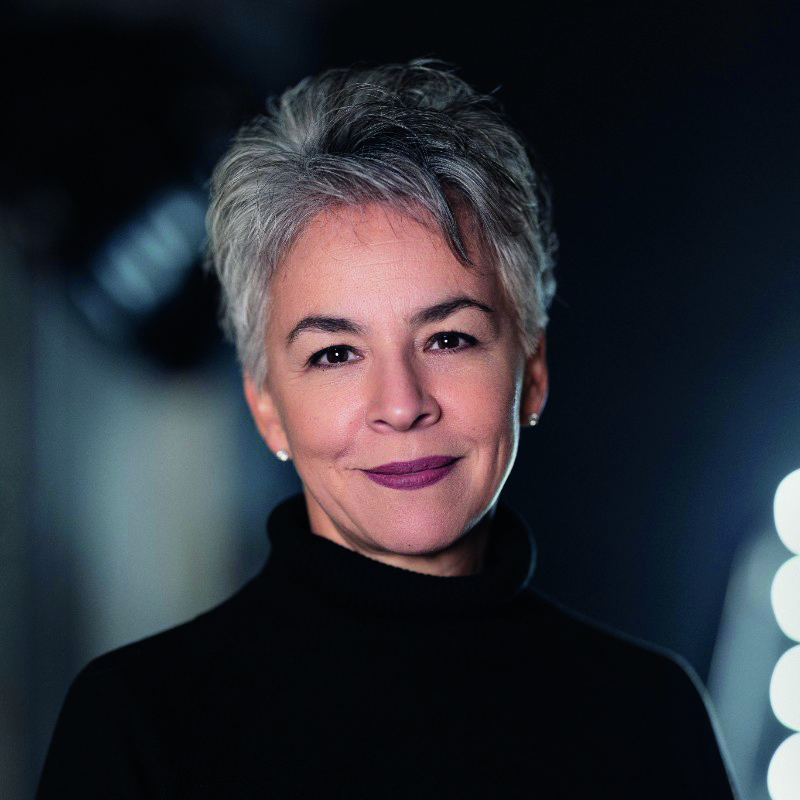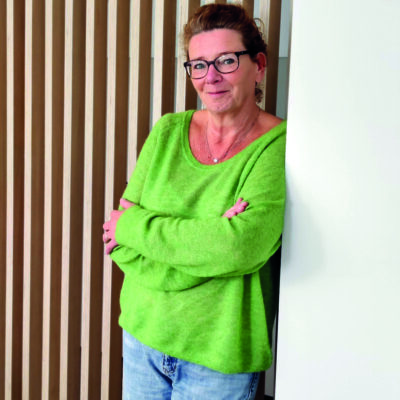Taide Guajardo, Chief Brand Officer Europe of P&G and Katty Roberfroid, Director General of egta discuss the importance of inclusive and accessible advertising, and their collaboration to address the issue.
Why is accessible advertising important?
Taide Guajardo: An estimated 8 million people in Europe are missing out on our communication. As one of the biggest FMCG companies and advertisers in the world, we have a responsibility to use our brands and our voice to help change norms and move society forward. This is why, amongst other actions, P&G wants to champion advertising accessibility, leveraging its brands and partners to create a superior consumer experience for everyone.
Globally, at least 2.2 billion people have a near or distance vision impairment and over 1.5 billion live with hearing loss.
Accessible advertising is one of the many actions we can take to drive Diversity, Equity and Inclusion (DE&I) for all consumers including those with a disability. One of our aspirations is to make 100% of our TV advertising accessibility-ready by 2025.
Beyond this, we know that diversity and inclusion are essential to unlocking the innovation needed to drive accelerated growth and a better world. These are two important priorities for P&G and are rooted in our values. This is why we are intentional in making a difference for underserved groups such as people with disabilities.
Katty Roberfroid: While much progress has been made in terms of TV content, the focus must now also be on advertising. Most broadcasters have the technology for subtitling and AD (audio description), available as they already use it for content, so they could use it for advertising too. Delivering AD services is trickier and there is a certain amount of fine-tuning and automation that needs to happen, but there is huge potential to reach significant audiences that are currently being excluded.
However, there is a lack of demand from advertisers who are unaware that campaigns could be made more accessible through features such as AD, subtitles and closed captions. Broadcasters are not communicating about what is possible, so the lack of demand continues.
Globally, at least 2.2 billion people have a near or distance vision impairment and over 1.5 billion live with hearing loss.
What can we do to break this vicious circle?
TG: It all starts with intentionality. I’m constantly surprised by the number of people who tell me that they had never thought about it! My tip is to relentlessly drive awareness of the need for accessible advertising.
As a businesswoman, I know this is a sizable untapped business opportunity, but I also know that P&G cannot do it alone. Creating impact at scale will require cross-industry collaboration. That’s why we’re committed to working in partnership with TV advertisers, agencies and broadcasters to act for accessibility with a sense of urgency, establishing the norms, creating the demand for accessible content, and investing in the capabilities required. Engaging on this topic with you and egta is one way to do this and we hope to influence and enable the industry to change the way in which we do advertising.
We know that images, stories and representation in traditional and social media, can profoundly influence public opinion and establish societal norms. But it’s still an unfortunate reality that disabled groups areirregularly featured in media, and when they are featured, they are often not appropriately represented.
KR: When we were approached by P&G and Taide on this issue, we were eager to do our share. Our aim at egta has been to facilitate this positive change by encouraging TV companies to commit to greater inclusion and accessibility on the advertising side and by supporting them as much as possible along the way. We have got the conversation going with our publication, ‘egta Snapshot: A Practical Guide to Access Services in TV Advertising’1, which serves as a roadmap to help those yet to embark on this journey.
TG: Essentially, we focus on where we can make the most impact. For us, it’s through audio description (AD), subtitles and closed captions (CC). We must drive intentionality at all levels: We have specific targets, train our people, and work with our partners to change the process and to establish norms and standards. We include our agency partners to see how we can make accessibility a default option on the work they do for us rather than an opt-in that each team member needs to ask for. Finally, it is also about being creative! For example, on some of our brands, we came up with creative solutions to enable the inclusion of audio descriptions using our audio ads. Our brands are ready and eager to make it happen, and our marketers are trained to make it happen. We want to work with other members of the industry and our partners, so more can join the effort.
Can something be standardised that would make your job easier?
TG: Absolutely, yes. Technology needs to be standardised, as do the methods for greater accessibility. When we talk about ‘methods’, we broadly refer to subtitles, audio description and closed captioning.
From an agency and production standpoint, we need to focus on standardising the best way to execute audio descriptions, enabling us to do it on a mass level and at scale. Then, this must be embedded into the production contracts of every single agency. We should get to a stage where we don’t have to ask for audio description to be added to advertising – it’s the standard. It should not be an opt-in, but an opt-out situation. That is my dream.
KR: On the broadcasters’ side, the technology used to enable subtitles and audio description is already there for content, so we can benefit from that for advertising, but one of the challenges is that there is not a one-size fits all solution for access services. Often the international dimension of TV campaigns means that they need to be designed with the specificities of many different countries in mind, so one must think about the kinds of access services that are going to be most useful to different audiences. In some cases, this might be subtitles, whereas in other instances, in countries with lower literacy rates, for example, sign language might be more appropriate.
As Taide suggests, accessibility needs to be there from the beginning as a standard. All too often, accessibility is an afterthought, at which point the creative may not lend itself easily to being audio-described or subtitled, for example. It has to be woven into the process at every stage.
Why is greater visibility of disabled groups / positive and diverse depictions of disabled people so important?
TG: We know that images, stories and representation in traditional and social media, can profoundly influence public opinion and establish societal norms. But it’s still an unfortunate reality that disabled groups are irregularly featured in media, and when they are featured, they are often not appropriately represented. Accurate visibility is essential to raising awareness and countering misinformation.
KR: The disabled community is certainly under-represented in advertising and that needs to change. It is not just about greater visibility, it’s about more diverse, representative, and authentic depictions of under-represented groups, that don’t resort to traditional, often lazy characterisations. TV is a medium that reflects society, so it makes sense that TV should reflect our entire society as it truly is.
It is not only the right thing to do, there is also a real business case behind diverse representation. Research from ITV and System1 in the UK looked at the power of ‘feeling seen’. Not only do ads representing minority groups perform better amongst an audience of the same group, but these inclusive ads also outperform average UK campaigns. I think diverse and truly representative advertising is something that audiences not only welcome, but have come to expect.
TG: I’m proud to say that advertising accessibility is not the only action we take. We are also driving representation in front and behind the camera and beyond, to create products and packaging that are accessible to all. At P&G, our mission is to touch and improve consumers’ lives – all consumers. So, it is rooted in our PVP to be inclusive through our brands and in all that we do. As one of the biggest FMCG companies and advertisers in the world, we have a responsibility to use our brands and our voice to help to move society forward. By doing so, we will also grow our business. We leverage our products and our brands to help move society forward on key topics such as gender equality, people with disabilities, ethnic and LGBTQ+ community inclusion. For example, we have introduced Navilens QR codes on our Pantene products in the UK to make them more accessible and are working closely with a blind influencer to communicate what we are doing






















